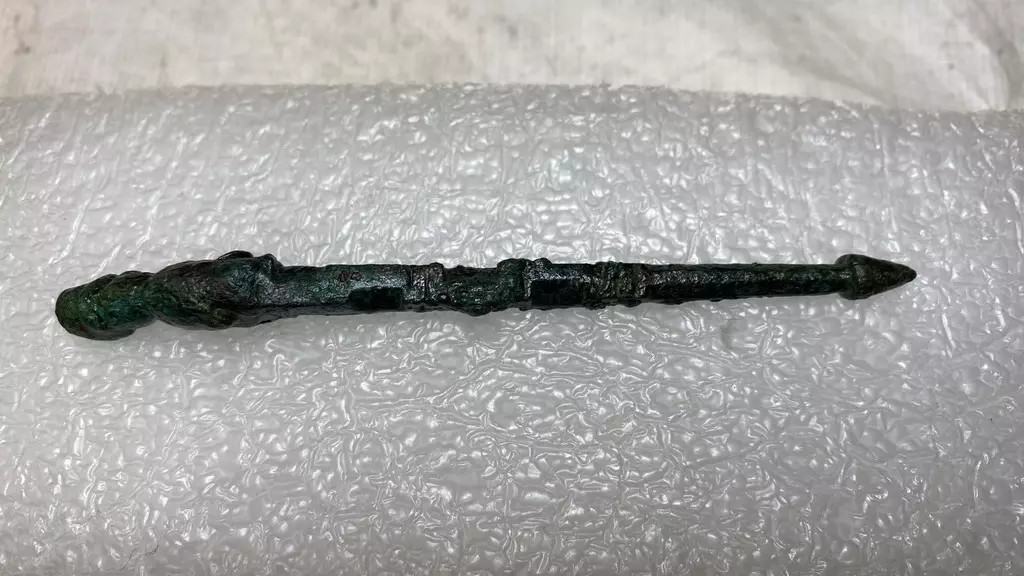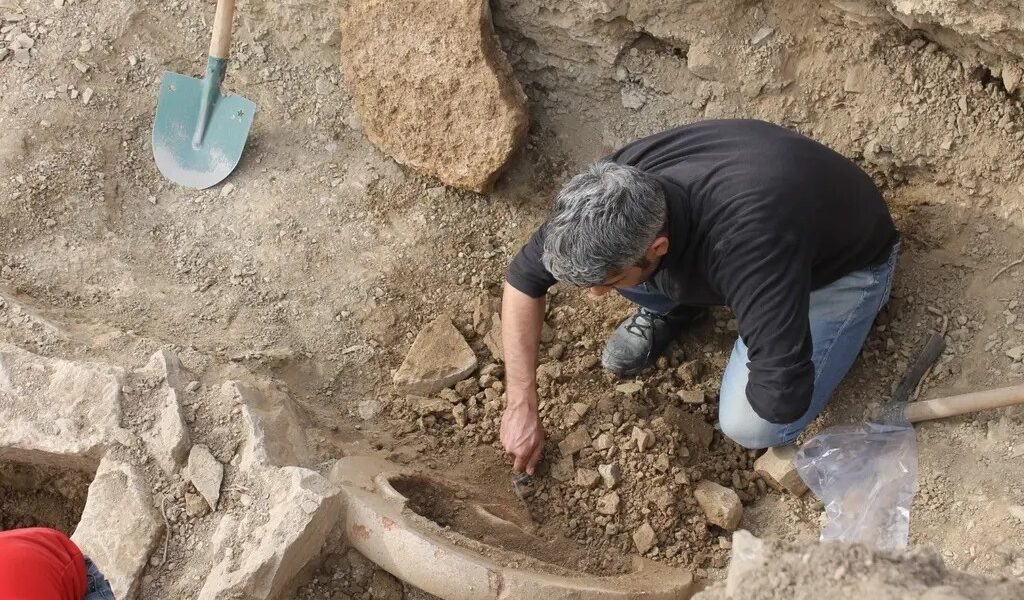Archaeological wonders continue to emerge from the soil of ancient Tenedos, located on the island of Bozcaada in Turkey. Recent excavations, led by Professor Turan Takaoğlu of Çanakkale Onsekiz Mart University, have uncovered a remarkable find: a 2,700-year-old children's cemetery.
This discovery adds another layer to the rich history of Tenedos. Mentioned in both the Iliad and the Aeneid, this legendary island played a role in the Trojan War. According to Virgil's Aeneid, the Greeks hid their fleet near Tenedos to trick the Trojans into believing the war was over and lure them into accepting the Trojan Horse within their city walls.

The necropolis, or burial area, revealed during the 2023 excavations showcased diverse burial practices for young children, hinting at the customs and beliefs of the ancient inhabitants.
The children were laid to rest in various types of tombs, including:
- Pithos tombs: Large clay jars used as burial containers.
- Amphora tombs: Large ceramic vessels traditionally used for storing liquids, repurposed for burials.
- Stone masonry tombs: Constructed using stone blocks, offering a more permanent structure.
A Glimpse into Rituals: One particular grave stood out for its unique characteristics. It was a 6th-century BC pithos tomb, essentially a large clay jar, that held another pithos tomb placed inside it during the 4th century BC. This "grave within a grave" suggests a later burial ritual, possibly honouring an ancestor or following a changing cultural practice.
Within this newer pithos, archaeologists discovered a collection of fascinating artifacts:
- Six terracotta figurines: These small clay statues depict two dancers adorned with Phrygian headdresses, one playing a stringed instrument called a lyre. The remaining three statuettes showcase standing women in Eastern-style clothing, possibly linked to the cult of Dionysus, the Greek god of wine and festivity.
- A bronze pin: Shaped like a horse's foot, this object might have served as a decorative element or held symbolic meaning in the burial ritual.
Unearthing Secrets: Following the excavation season, the figurines underwent meticulous restoration and conservation procedures under the care of Dr. Çilem Yavşan. The recovered artifacts were then delivered to the Troy Museum Directorate for further study and preservation.
Insights from the Experts: Professor Ömer Can Yıldırım, Vice President of the Excavation, provided valuable insights into the discoveries:
- Excavation Scope: Professor Yıldırım confirmed that the 2023 excavation efforts focused on two primary areas: Bozcaada Castle and the Ancient Necropolis Area. The latter site, previously unknown in archaeological literature, revealed itself as a dedicated burial ground for children.
- Unique Burial Practices: Among the children's graves, a distinctive "pithos within a pithos" structure was identified. This practice, not previously documented in the region, suggests potential changes in burial rituals or ancestral reverence over time.
- Dating the Discoveries: Professor Yıldırım explained the chronological sequence of the burials. The initial burial occurred in the 6th century BC, followed by a second burial approximately 200 years later, during the 4th century BC, or the Late Classical Period.
- Interpreting the Artifacts: By analyzing the general characteristics of the artifacts, particularly the clothing styles and goddess motifs on the figurines, Professor Yıldırım proposed connections to the prevailing beliefs of the time. He suggests these objects reflect the respect shown towards children who died young and the belief in reaching a deity after death.
- Cultural Influences: Professor Yıldırım further highlighted the stylistic and analogical features of the artifacts, indicating their manufacture roughly 2,700 years ago. He noted that the clothing styles depicted appear more aligned with Eastern Phrygian culture and the cults of Cybele and Dionysus. This suggests the dominance of these religious ideologies within the Tenedos Necropolis during the 4th century BC.
- Unlocking History: Professor Yıldırım emphasized the significance of the typological features found on the artifacts. Their analysis contributes significantly to understanding the cultural characteristics of the Tenedos Necropolis during the Late Classical Period.


